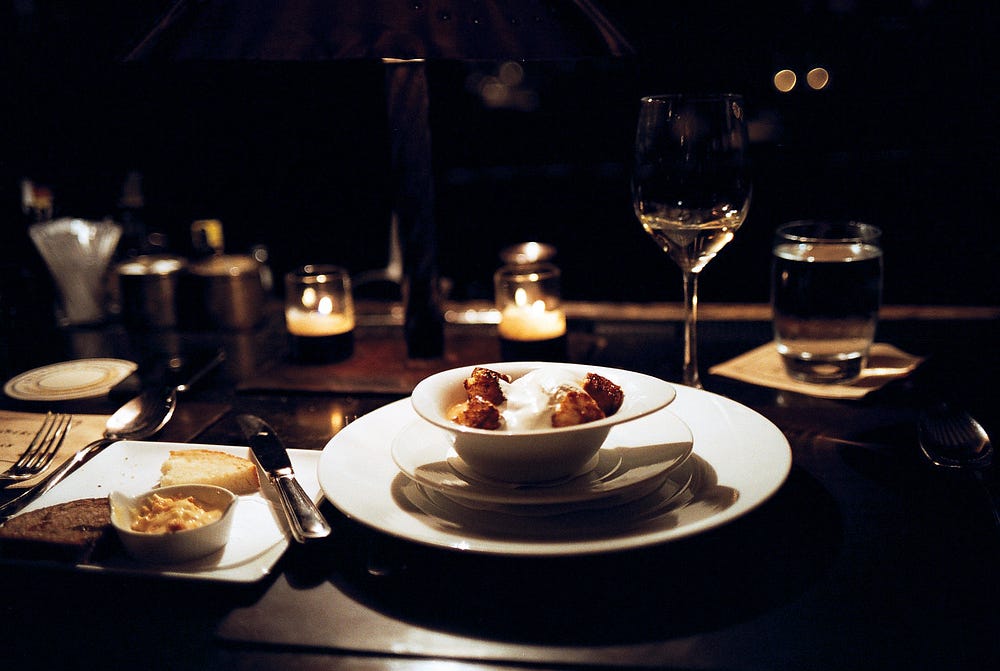A/B testing
for restaurants
Tools, methodologies and processes from the UX toolbox help us think holistically about a product or a service: having the business and user needs in mind, as well as the data that supports it. One can’t but wonder why at least a portion of that knowledge isn't implemented more in our, so called, real lives.

Let’s take, for instance, the elaborate restaurant business — where chefs and business owners try to focus on a lot of things. To name a few: the quality of produce, creativity in menu innovation, interior hip factor, diversity in the liquor list, etc. They search to find the perfect managers and good staff. But how much testing do they actually do? What data do they gather and how do they convey that data into meaningful insights? The research says — not much. There isn't much done on the data side. It’s considered a creative venture rather than a stable, data-driven business.
“There’s no real market testing or getting people’s feedback.” — Brian Bordainick, CEO of Dinner Lab
The proposal I make is a simple one. Restaurant’s usually make more money on upselling and cross selling: entrées, desserts and drinks (did you know that +50% of revenue is made on drinks). The idea is to focus on and propose a way to improve these conversions with rudimentary A/B menu testing.
So, what does actually A/B mean?
A/B
At its core, A/B testing is exactly what it sounds like: you have two versions of an element (A and B) and a metric that defines success. To determine which version is better, you subject both versions to experimentation simultaneously. In the end, you measure which version was more successful and select that version for real-world use. — Paras Chopra
Let’s see how we could apply this to the menu.

The Menu
The menu restaurants feature are a standard trio of mains, drinks & dessert. Let’s take a closer look at Marta’s dolci, the dessert menu.

The Dessert
Desserts are interesting in a sense they are completely emotional decisions; we've already had the main course, and have fulfilled the primordial need of hunger. It’s usually the server’s role to upsell dessert upon nearing the end of the meal.
Let’s do a quick experiment and see if there is space to improve the menu and guide the customers into a direction.
There are solutions that help me make a decisions but these are external pieces of information that require a pause in the standard customer flow.

If we were, for instance, to feature an item on the menu, let’s say the “Ice Cream Panino” we would achieve the following:
- help users that have a trouble choosing with recommending the most popular item on the menu (and thus probably indulging their wishes for the sweet rush)
- help users choose a dessert at all (as the French philosopher Jean Buridan taught us)
- gain trust with users since all of the desserts are same price and the recommendation will feel genuine, rather than a selling point.
- deflate the need to check for tips on a smartphone app.
- cross-sell more profitable items: although they all cost the same amount, some are more profitable than others.
- recommend a house specialty (without the need to name it after the place or put in small caps “house specialty”).
So let’s find the best way to feature this item.
A

Adding a simple visual cue (such as the star symbol) draws attention to the menu item and is still open to interpretation (it could mean it’s a new meal, it’s a house favorite / special, it features a locally-relevant ingredient, etc).
B

I've already mentioned external tools like Foursquare. Bringing back the user feedback from the online community and inflicting the menu with the data features an item whilst being completely objective and data driven (rather than selling the dish the restaurant wants to push for).
C

A gazillion different options. For instance:
- pricing & sort: starting with the obvious ones
- type distinction: type cut, size
- color emphasis: type color, background highlight
- copy: a name that is different than all the others. Short, long, interesting, ambiguous
- story: including a short story about a dish and why it’s important to the location, to the chef, to the restaurants brand
- trivia: similar to story but shorter and more pop (“Did you know pistachio was Lennon’s favorite ice cream?”)
- graphics: icons, ornaments
- photography: although highly unlikely, you could distinct the meal with the usage of photography
- guerrilla: putting human touches, such as circling the dish with a ball pen
- perfume tester trick: smudging the dish name with one of the ingredients
- community idea by Stu — offering a smaller/lighter option could help encourage those toying with the idea. Something simple like ‘Don’t have much room left? Try our lighter options’
ps. What are your solutions to feature an item? Leave a note and I'll include the best ones in the article.
Conclusion
This is an invite to start thinking about the tools we know and use — and how they could extend the patterns in which they are mostly used. Some of the tools could benefit and improve our day-to-day realities, enrich our personal lives, help other industries and *en general* improve people’s experiences with products, services, places and other people. Make these touch points smooth and the experiences delightful and memorable.
Let’s use these tools to help us pick the right dessert.
It will make our lives sweeter.
Notes
Don't surprise regular visitors.
This can be easily addressed with a questions from the welcoming waiter: “Is this your first time at our restaurant?” (which, btw, is quite usual).
A daily routine
There is a lot of places that print the menu out daily so this is a feasible solution for the majority of restaurants that would benefit from this solution.
Want to learn more about how you can improve your product’s UX? Tin Kadoic and Marko Dugonjic are running a UX for Startups workshop in NYC on November 11, 2016. Ain’t that a cool date?
PS
I have no affiliation with the restaurant in hand. I just had a dessert there a few days back when the idea for the article struck me.
The Hotel Room UX
I've already covered UX in the Hospitality industry so feel free to check it out.
Research, further reading and inspiration
Why Menus Suck, The Engineering of a Chain Restaurant Menu, A/B Testing for Restaurants, Menus are Business Proposals, Dinner Lab, The Basics of Up-Selling Menu Items, 10 tips for up-selling, The Language of Food: A Linguist Reads the Menu, Priceless: The Myth of Fair Value.

